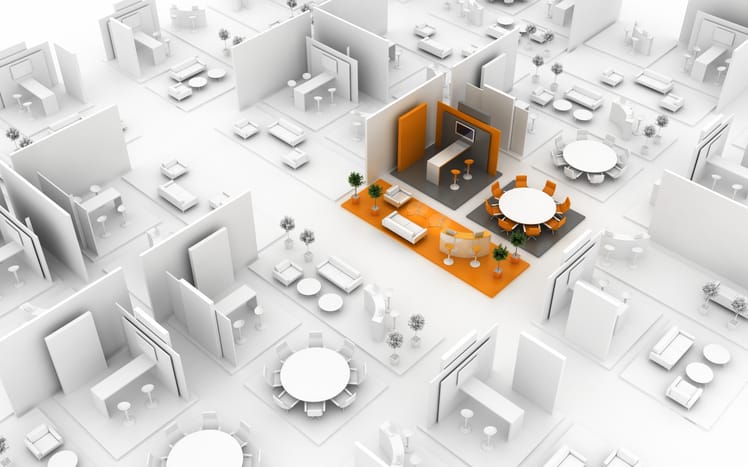Tradeshows are major events in many different industries – and it doesn’t matter what type of industry you are in! They provide a time, place, and format for connecting all those within an industry. In addition, they provide a chance to get together and see what advancements are taking place within the community, as well as any other happenings.
If you are looking to take a step out and be a leader within your industry, you may find yourself in need of hosting a tradeshow. Here is all you need to know about planning a successful tradeshow layout for your entire industry.
Find your tradeshow space
Tent rentals provide the perfect space for your tradeshow layout. They come in all shapes and sizes – so you are bound to find one that will work for your needs. Thanks to their open floor plan (no poles to get in the way), you have a great space to design the best layout for your event.
The vendors that reserve space put a lot of time and money into creating a booth and display for your show. They are counting on you to provide a clean, hazard-free, weather resistant venue. A tent rental has all the perks of an indoor space – including everything that your vendors need – but the freedom of locating the tradeshow where it is most convenient for everyone involved. For example, tent rentals offer flooring, sidewalls to protect from inclement weather, and climate control to keep your vendors cool or warm depending on the outdoor temperature.
Decide the spaces within your tradeshow layout
Consider spaces you will have within your tradeshow layout. For example, many tradeshows have the following:
- Aisles of vendors
- Mingling/lounge area
- Stage and seating area
Behind the scenes, there are these possible areas:
- Storage/setup area
- Restrooms
- Kitchen or food prep station
Once you know your areas, it is important to determine the sizing of each space. In general, tradeshow vendor spaces are expected to be 10’ x 10’. It is also common for there to be restrictions regarding things such as booth design, including walls and height, etc.
Sketch out your space – including the dimensions – and see either how big of a tent rental you are going to require or if the tent comes first, see how many spaces you can rent out to vendors based on the size of your tent. Keep in mind that there are different places in which you can design booth space within your venue.
All about the booth spaces
There are generally just four types of booth spaces available to most tradeshow vendors. They are standard, perimeter, peninsula, and island.
- Standard booths – Those that share space with vendors in the back and on both sides. This is the most common type.
- Perimeter booths – These are the booths that are found along the inside wall of the venue. They will have other vendors on either side, but none in the back.
- Peninsula booths – Booths that have walkways on three of its sides (hence the name).
- Island booths – Those booths that are standing out in the open, surrounded by walkways on all four sides. These booths tend to catch the most attention.
Standard and perimeter booths are generally smaller in size. In addition, peninsula and island booths are usually placed in a manner to draw the most attention – due to their size and their location.
Keep the people moving
You want – or need, rather – to keep people moving throughout your event. Your vendors have purchased their place within your tradeshow and, while there is no such thing as a totally equal opportunity, they do want to be seen by the attendees.
Since you cannot physically move someone’s feet to keep them wandering through your tradeshow, you can design the layout in a manner that is going to unknowingly keep them moving forward.
Key design tips for tradeshow booths
As stated above, there will likely be restrictions on tradeshow booths. After all, there are very many designs that booths can replicate and some may not fit the venue. However, once the spaces are designed and the restrictions are put in place, check out these tips for having a successful tradeshow booth.
- Your booth needs to make a very quick statement about your product or brand. As attendees are passing by, they are going to glance in your direction – what will they see? This is where you need to catch them with an image, a bold word, or a display.
- Standing out is a must. Whether it is through an engaging display for attendees, an audio-visual display, etc. – find something that you think will get attendees to actually stop and spend some time at your booth.
- Offering up something free can draw a crowd. Let’s face it – everyone loves free stuff! This can range from something such as a cup of coffee or a pen to a raffled car!
- Avoid clutter by keeping your booth space clean and neat.
Safety features
Last, but not least, safety is always a concern when you place a lot of people inside a venue. Be sure to take this seriously to ensure a smooth, successful tradeshow event. Here are some safety measures you may want to take:
- Hire an electrician, don’t try to do it yourself. All of your vendors will likely need access to power – let the professionals handle it.
- Cover and hide exposed wires. Because you will likely have to use extension cords to disperse power to booths, the cords can cause a hazard for those walking through aisle ways. Be sure to cover these with rugs to create a smooth walking surface for attendees.
- Have clearly marked entrances and exits.
- Also, have fire extinguishers handy as a precaution.
- Prohibit the use of aerosol sprays, fireworks, candles, and other such items.
Your tradeshow is sure to be a success if you plan your tradeshow layout and take steps to enforce restrictions and keep safety a priority. The better event you design, the more booth spaces you are likely to sell. Don’t take any shortcuts!

